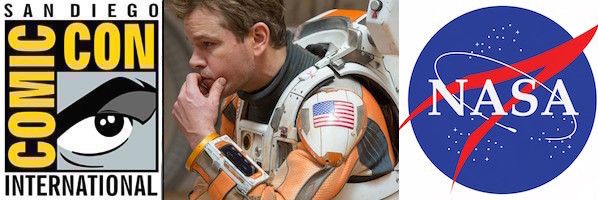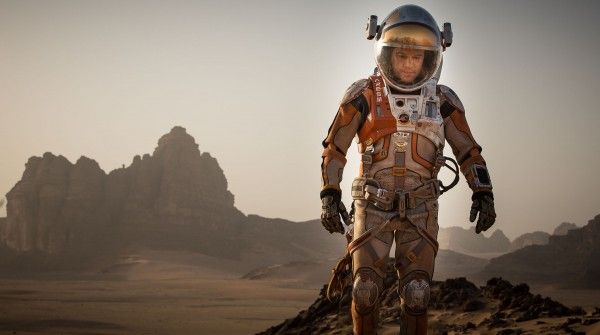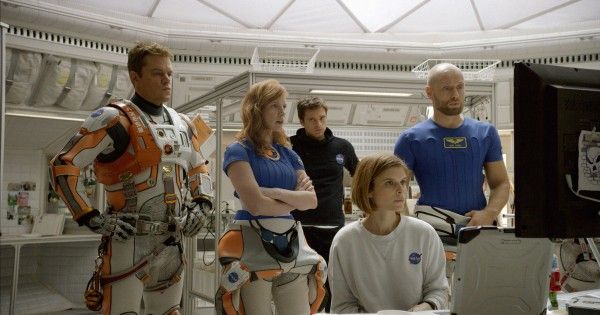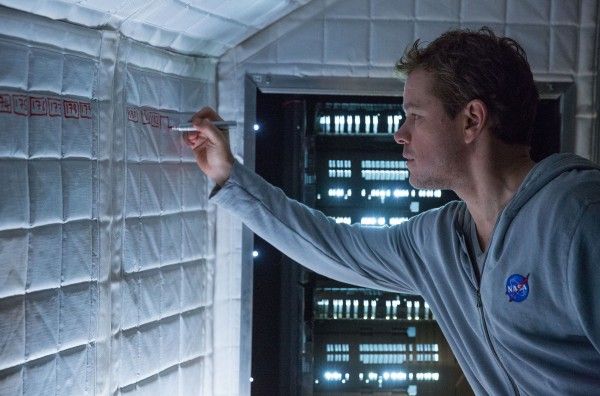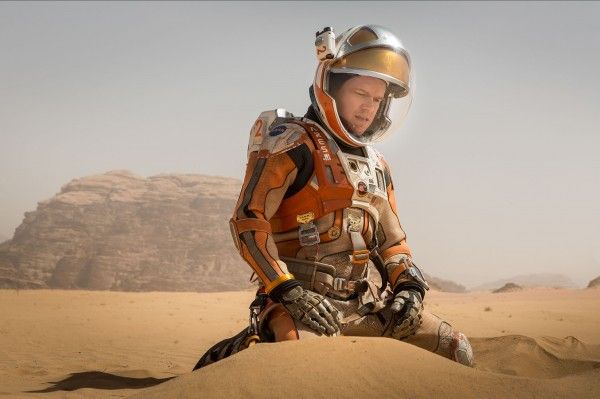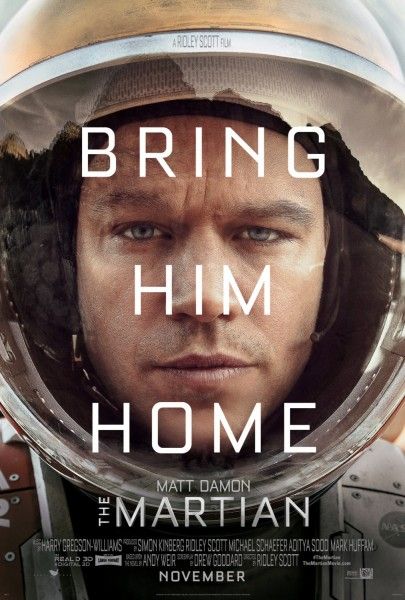The movie based on best-selling novel The Martian, directed by Ridley Scott and starring Matt Damon, comes out Oct. 2, but, as the NASA: Journey to Mars panel revealed, actual human travel to Mars may not be much further off. The film’s producer Aditya Sood sat down with Andy Weir, the book’s author, and Jim Green, director of planetary science for NASA, Todd May, manager of NASA’s Space Launch Systems Program, and Victor Glover, who just the day before had graduated from NASA’s training program and officially become an astronaut. Sood said that Glover and the members of his class are likely to be among the first humans to walk on Mars.
- The panel was divided into three parts. Green and May each gave brief presentations about the work they are doing with NASA to make a human mission to Mars a reality; then Sood interviewed Glover and Weir about their own journeys to space (future and fictional).
- Green’s presentation was called “Learning to Be a Martian” and discussed how Mars will be made survivable for the first astronauts to land there…and the colonists to follow.
-
We currently have two operational rovers on Mars, Opportunity and Curiosity. Curiosity is investigating an ancient riverbed, as one of our long-standing questions about the planet is where did the water, that evidence suggests once existed there, go?
- Amazing images of linear streaks on the Martian surface were shown, which displayed evidence of water coming out of aquifers during the summer and pouring down the side of craters. Instead of us having to bring our own water, Green said, the planet will have water for us to use. “Bring a straw because we’ll know where to go.”
- The rovers have also been studying the soil, drilling to uncover “not red Mars but grey Mars.” Green showed more images of the grey soil beneath the planet’s iconic red surface — soil which he said contains “they key chemical ingredients for life.”
- The InSight mission, scheduled to launch in 2016, will take our next lander to Mars: not a rover but a stationary unit designed to take seismic readings. Following that will be the Mars 2020 Rover, which among other experimental tools will bring an instrument called MOXIE, which Green described as “the first human exploration instrument.” It’s an oxygenator — a way to convert the toxic CO2 in Mars’ atmosphere to breathable oxygen.
-
Curiosity's data implies the journey to Mars will be a survivable trip, Green said. “We don't plan on leaving anyone there.”
- May then discussed his project, the SLS rocket, which was described as “the rocket that will take humans to Mars.” They are currently in the middle of the project’s final design review and when the rocket is complete it will be more powerful than the Saturn V.
- May described the journey to Mars as consisting of three stages of experimentation: Earth Reliant (which we are currently doing with the ISS, etc.), the Proving Ground, and Earth Independent. The SLS’ second flight would be a key step in that second stage: the plan is to set a distance record with a deep retrograde orbit of the moon.
- ”We’re making rocket parts on 3D printers,” May revealed. NASA calls it “selective laser melting,” May said, but it is essentially the same 3D printing technology widely in use, and it is making the rocket’s production “much more affordable.”
- May showed an animated video of the intended SLS launch. “We’re getting this rocket ready for Victor,” he said.
- Glover discussed the work of his fellow astronauts on the space station: it “has been manned for 15 years and we’re still learning things. We’re learning to understand the effects of long-distance space travel on the human body. The hard thing to get to Mars is humans,” he emphasized. “The weak link in the chain is us.”
-
Weir then told the story of behind The Martian, in its book, film, and original self-published forms, although he said he was reluctant to follow the NASA employees who spoke before him. “Sometimes I put pants on during the day to write. Sometimes no. These guys actually do things!”
- Weir began his career as a computer programmer, although he always wanted to write. He worked for AOL and when they merged with Netscape, he was laid off and forced to sell his stock options—happily at what turned out to be AOL’s all-time high stock price. He used the money to take three years off to write.
- The book he wrote — not The Martian — wasn’t any good, he said, although it was an improvement over his first book, written in college: “The first one really sucked.” He couldn’t get an agent or a publishing deal, so he went back to work as a software engineer and decided to keep writing as a hobby, putting his work up on his own website.
- He started writing three different serials at the same time: one about a 19th century mermaid and another a hardcore sci-fi story about aliens, with the third being The Martian, “posting it chapter by chapter when I felt like it.” He built up “about 3,000 readers” and most commonly got two types of emails: ones alerting him of scientific inaccuracies and ones saying, “I love The Martian, but I hate reading it on your website” — “Which is fair,” Weir added, “because my website sucks.”
-
In answer to these requests, he put the finished novel on Kindle at 99 cents, the lowest price Amazon allows. “I wanted to give it away for free,” Weir said. To his surprise, the book became popular, rising to No. 1 in sci-fi, which eventually landed Weir a deal with Random House. The movie rights sold at almost the same time: “The two deals were agreed upon four days apart,” Weir said.
- Screenwriter Drew Goddard was originally on board to direct the film as well, but left to helm the 2017 Spider-Man movie. However, the project attracted Damon’s attention and then Scott’s which, according to Sood, meant the whole thing “came together remarkably fast.”
- Of his success, Weir said, “I don’t know what the hell I did right. But I’m glad. Don’t poke it.”
- The panelists concluded by talking about how the arts and sciences can inspire each other. Glover said astronauts in training have a reading list and The Martian is on it. “Artists and authors think differently about problems” than scientists, said May, and that’s an asset. Books and films like The Martian also make people excited about space travel, and public interest is crucial for exploration programs to succeed — and for us to get to Mars.

